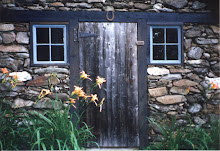(as the crow flies)

In Paul Theroux's new and plucky book on travel, The Tao of Travel (actually), he shares countless episodes and passages from travel books down the ages. One of my favorite chapters in the book deals with walkers, and the book would be remiss if it had missed this slender book by Werner Herzog. All of the Theroux book, as the Herzog, reads with the saunter of a well prepared long walk, in fact a hike, if it comes to that. The Tao of Travel is leatherly bound with a substantial bookmark built into the text. The book gives one full page to Herzog and here it is :
WERNER HERZOG: WALKING ON FOOT IS A VIRTUE
On his deathbed, "Bruce summoned Herzog because he thought the director had healing powers,: Nicholas Shakespeare wrote in his biography Bruce Chatwin. "When they first met in Melbourne in 1984. . .their talks had begun with a discussion on the restorative powers of walking. 'He had an almost immediate rapport with me,' says Herzog, 'when I explained to him that tourism is a mortal sin, but walking on foot is a virtue, and that whatever went wrong and makes our civilization something doomed is the departure from the nomadic life.'"
Herzog's belief in solvitur ambulando is unshakable. In an interview he said, "I personally would rather do the existentially essential things in life on foot. If you live in England and your girlfriend is in Sicily, and it is clear you want to marry her, then you should walk to Sicily to propose. For these things travel by car or aeroplane is not the right thing."
And he walked the walk. In 1974, hearing that the German film director Lotte Eisner was dying in Paris, Herzog decided to walk the five hundred miles there from Munich, "believing that she would stay alive if I came on foot." He added, as passionate walkers often do, "Besides, I wanted to be alone with myself." He was thirty-two. It was the winter of 1974. He described the journey in Of Walking In Ice (1980).
Herzog traveled almost as a mendicant. He rarely stayed in hotels, preferring to break into unoccupied houses and sleep in them, or sneak into barns and sleep in haystacks. He was frequently taken to be a tramp or an outlaw — he was indeed a trespasser, but that too is often the role of a walker. He was sent away from inns and restaurants for his sinister appearance.
His route was as the crow flies ("a direct imaginary line"), taking him through cities and slums and garbage dumps and past motorways; this is anything but pastoral, and yet his mood is reflective. His prose is cinematic, composed of heaped-up images, like a long panning shot of a young man trudging through snow and rain, across bleak landscapes, never making a friend, never ingratiating himself. His legs ache, his feet are so blistered and sorer he limps. He writes, "Why is walking so full of woe?"
He records his dreams, he recalls his past, his childhood, and his prose becomes more and more hallucinatory. Nearer Paris, where he will find that Lotte Eisner has not died, he is strengthened by the sight of a rainbow: "A rainbow before me all at once fills me with the greatest confidence. What a sign it is, over and in front of he who walks. Everyone should Walk."


Of Walking In Ice: Tanam (1980)
The Tao of Travel: Houghton Mifflin 2011





































